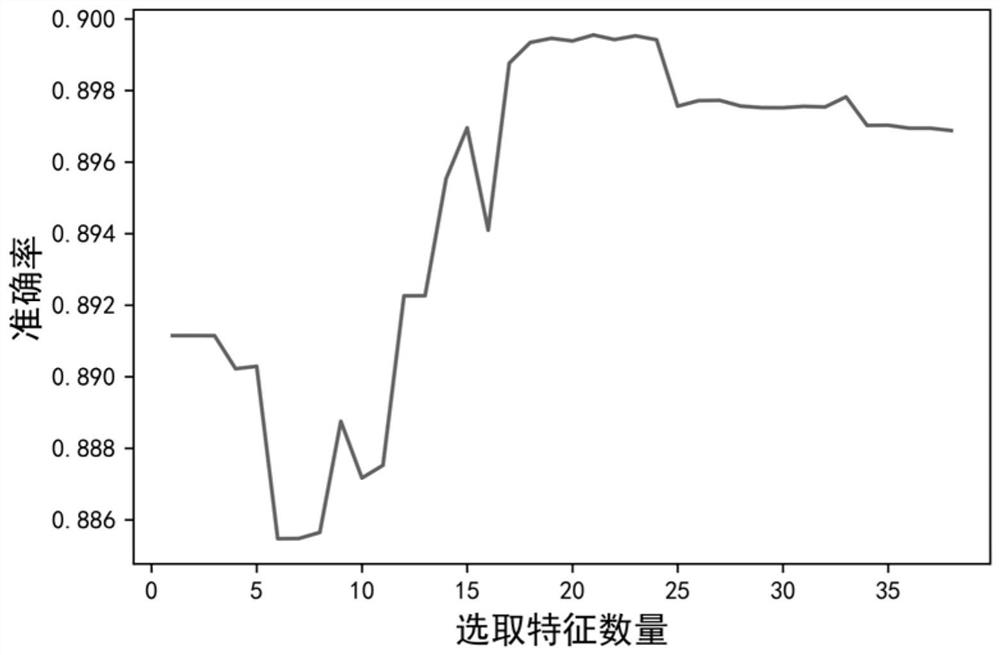Onshore wind turbine generator blade icing diagnosis method based on migration component analysis
A wind turbine and component analysis technology, applied to wind power generation, wind turbines, engines, etc., can solve problems such as poor generalization ability and failure to identify blade icing faults
- Summary
- Abstract
- Description
- Claims
- Application Information
AI Technical Summary
Problems solved by technology
Method used
Image
Examples
Embodiment 1
[0048] This embodiment relates to a method for diagnosing icing on the blades of an onshore wind turbine based on migration component analysis, and the specific steps are as follows:
[0049] Step 1: Monitor and record the icing status of wind turbines, add icing labels and time continuity labels to the corresponding SCADA data to form a model training data set;
[0050] Step 11: Select a wind turbine in good operating condition in the icing period to form a reference set for training the model;
[0051] Step 12: Observing and recording the icing period and normal period of each unit in the reference unit set during the icing period;
[0052]Step 13: Select 26 characteristic variables from the original SCADA data that are highly correlated with blade icing, including: wind speed, generator speed, grid-side active power, wind angle, average wind direction angle, yaw position, yaw Speed, blade angle, pitch motor temperature, blade speed, ng5 temperature, x-direction acceleratio...
Embodiment 2
[0085] First, the icing diagnosis model based on the Naive Bayesian algorithm is obtained by using the training set data combined with the Naive Bayesian algorithm through multiple iterations, and the test set data is input into the trained model to obtain the diagnostic accuracy index; then, using the implementation The migration component analysis method described in Example 1 adjusts the data distribution difference between the training set and the test set to obtain the post-migration training set and the post-migration test set, and uses the post-migration training set data combined with the Naive Bayes algorithm to obtain the Naive Bayes-based The icing diagnosis model of the Adams algorithm is used to input the transferred training set data into the trained model to obtain the diagnostic accuracy index.
Embodiment 3
[0086] Embodiment 3: First, the icing diagnosis model based on the linear discriminant analysis algorithm is obtained through multiple iterations by using the training set data combined with the linear discriminant analysis algorithm, and the test set data is input into the trained model to obtain the diagnostic accuracy index; then, Use the migration component analysis method described in Example 1 to adjust the data distribution difference between the training set and the test set to obtain the training set after migration and the test set after migration, and use the training set data after migration in combination with the linear discriminant algorithm to obtain the linear discriminant algorithm based on multiple iterations. The icing diagnosis model is used, and the transferred training set data is input into the trained model to obtain the diagnostic accuracy index.
PUM
 Login to View More
Login to View More Abstract
Description
Claims
Application Information
 Login to View More
Login to View More - R&D
- Intellectual Property
- Life Sciences
- Materials
- Tech Scout
- Unparalleled Data Quality
- Higher Quality Content
- 60% Fewer Hallucinations
Browse by: Latest US Patents, China's latest patents, Technical Efficacy Thesaurus, Application Domain, Technology Topic, Popular Technical Reports.
© 2025 PatSnap. All rights reserved.Legal|Privacy policy|Modern Slavery Act Transparency Statement|Sitemap|About US| Contact US: help@patsnap.com



